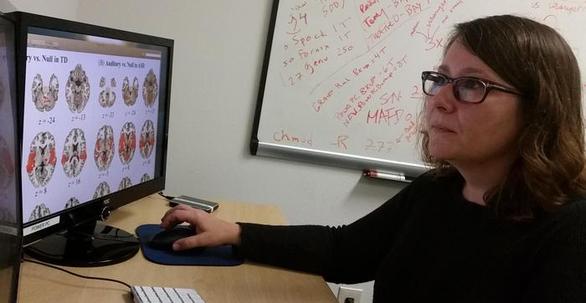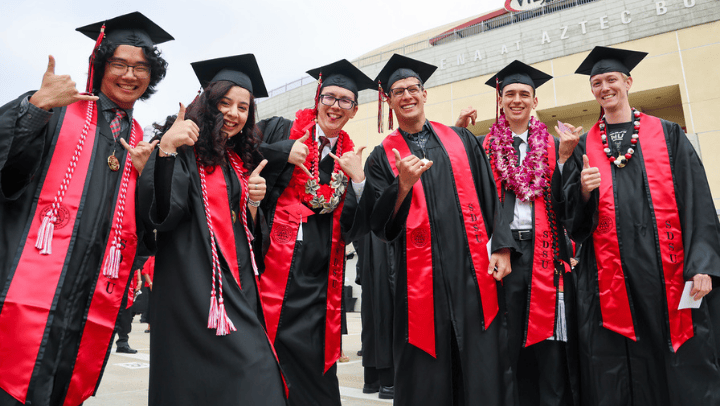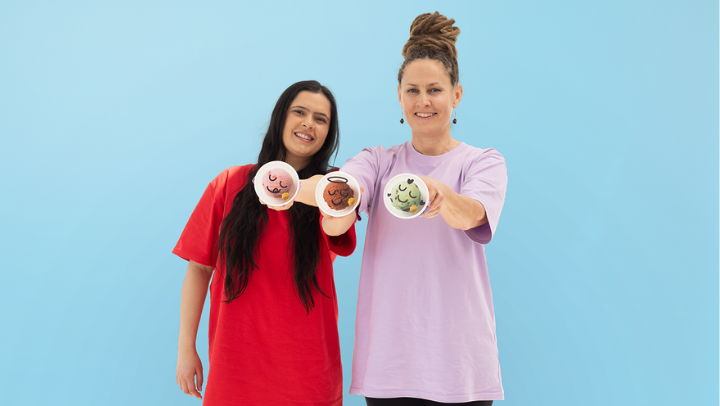Searching for Early Signs of Autism
SDSU psychologist Inna Fishman received a major grant to look for autisms neural signature in very young children.

“The earlier you start the interventions, the better the outcomes will be.”
Earlier this month, the U.S. Centers of Disease Control released yet another report updating the prevalence of autism in children. The latest findings suggest that about 2 percent of children in the United States, or about one in 50 children, can be diagnosed with autism spectrum disorder (ASD). Despite this high prevalence and a wealth of research on ASD, little is known about the biological underpinnings of this disorder.
To this end, the National Institutes of Health (NIH) recently awarded Inna Fishman, a San Diego State University psychologist, a major grant to look for the early “brain signature” of ASD in children around two years of age.
To understand the causes of this lifelong disorder and eventually come up with effective treatments, researchers must identify the developmental markers of autism during early brain development.
“A diagnosis of autism spectrum disorder at age two was uncommon just several years ago, but today clinicians are confident and can reliably diagnose autism at that age,” Fishman said. “Because this is the age when symptoms of ASD first emerge, brain images acquired at this age should allow us to capture development, organization and function of neural networks early in autism.”
Fishman and her research team plan to scan these children three times between ages 2 and 5 years, a developmental window during which autism symptoms first appear and reach their peak. By doing so, they hope to identify how and when brain trajectories diverge between kids with ASD and their typically developing peers. The researchers will achieve this by performing brain scans in young children while they are asleep, during natural sleep.
Research in younger children
Initially trained in clinical psychology, Fishman came to SDSU five years ago to work alongside neuroscientist Ralph-Axel Müller, a leader in the field of autism neuroimaging. At the time, Müller was focused on the brains of adolescents with autism. Fishman’s experience working with younger children allowed the team to study brain development in autism in younger children ages seven and up.
But Fishman soon realized that many of the effects of autism on the brain that she and her team could identify with brain scans at age 7, had already been in place by that age. Thus, to investigate brain network organization at the time of symptom onset, Fishman applied for an NIH grant. This highly competitive award (dubbed BRAINS, or Biobehavioral Research Awards for Innovative New Scientists) will provide Fishman with $2-million in funds, over 5 years, allowing her to apply the most advanced and novel neuroimaging techniques—anatomical magnetic resonance imaging (MRI), functional connectivity MRI and diffusion tensor imaging—to track brain network development and organization in children diagnosed with autism as their symptoms first appear through full manifestation of the disorder.
It’s important to be able to identify autism spectrum disorder as early as possible, Fishman explained, because early interventions can make a big difference in the child’s ability to manage their symptoms later in life. Early interventions have been shown to help with being able to make eye contact, to understand other people’s emotions, with motor control, language, and other cognitive skills and behaviors.
“The earlier you start the interventions, the better the outcomes will be,” Fishman said. “Thus, understanding the brain mechanisms at work during the first years of life, as the first behavioral signs of autism emerge and reach their peak will bring us closer to understanding the causality of this prevalent disorder, and its earlier identification and treatment.
Fishman believes a number of factors helped her succeed in winning funding in this extremely competitive field. Her background as a clinician gave her hands-on experience working with young children with autism and their families. Also, Fishman feels that she is entrenched within both the university’s and the greater San Diego region’s strong neuroscience community. She happily admits that her SDSU co-investigators, including Müller and Ruth Carper of the Department of Psychology, and Juanjuan Fan of the Department of Mathematics and Statistics have all contributed to the success of her grant application.
Looking forward
As Fishman and her team continue to shed new light on brain development in autism, she is looking forward to the completion of SDSU’s Engineering and Interdisciplinary Sciences Complex, scheduled to open in 2018. The complex will house a state-of-the-art neuroimaging facility; right now, Fishman and her colleagues have to use the facilities at the University of California, San Diego for their brain imaging research. Having a state of the art neuroimaging center in-house will make things much easier and provide a better learning environment for students, Fishman said.
“Our operations are so complex right now, shuttling back and forth between two campuses, for both students and staff, as well as children who take part in our research and their families,” she said. “Having that equipment here on campus would make our research endeavors much more efficient and expedient.”



